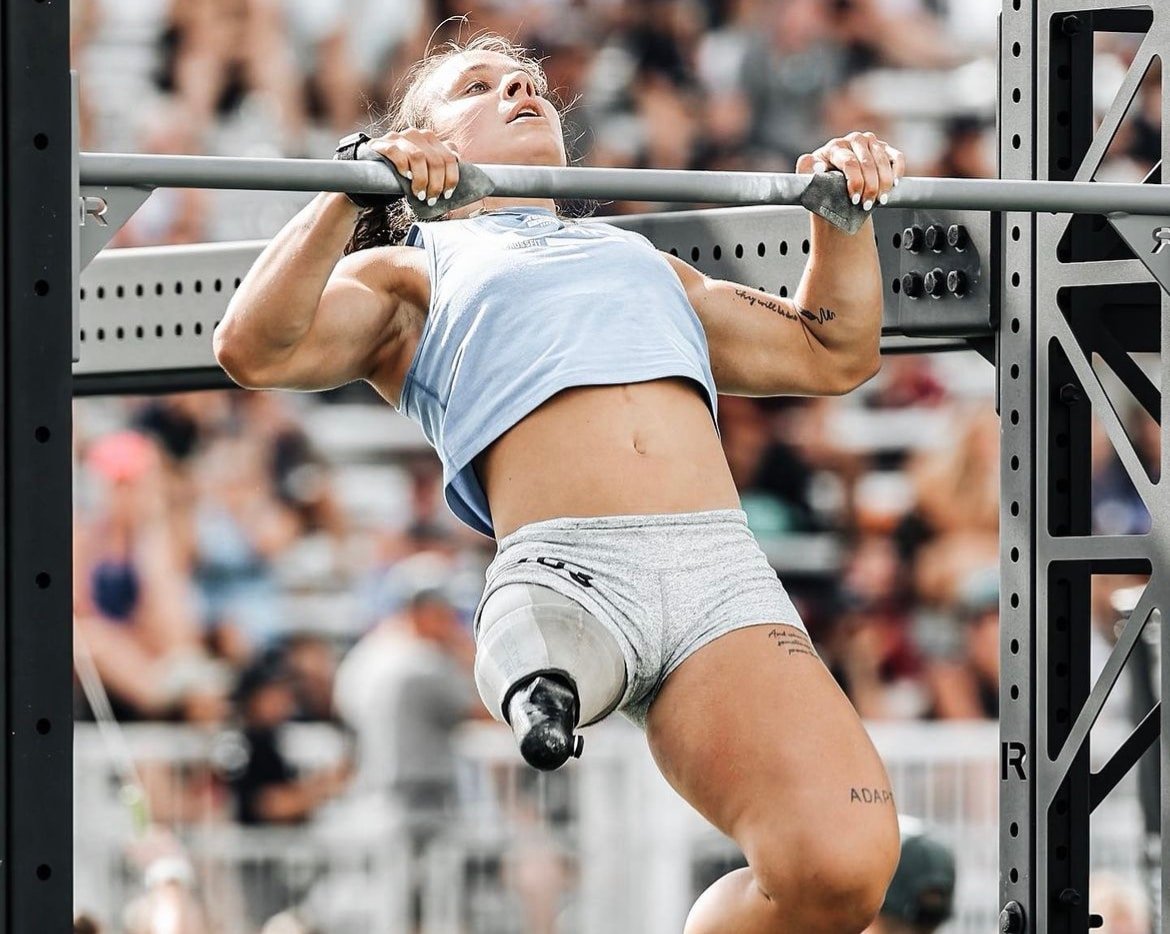Renegade rows improve your conditioning, stability, and back and core strength.
CrossFit training is a versatile exercise program with numerous advantages for lifters and other athletes. By enhancing body composition and augmenting functional strength through dynamic and functional movements, CrossFit empowers individuals to push the boundaries of their muscular capabilities while gauging their aerobic endurance. (1) Renegade rows are a staple exercise in CrossFit programs.
This is no surprise as they are functional and help you build upper body strength. Renegade rows help to improve your conditioning, core strength, and stability – all important components of excelling as a CrossFit athlete.
Renegade rows are a mixture of a plank and a row, hence their other name, the plank row. This exercise requires a lot of focus, and you must always pay attention to details. In this exercise guide, we discuss the renegade rows and the benefits that make it a part of CrossFit training, how to do them properly, and also share other alternatives to try out.
Techniques and Muscles Worked
Renegade rows target your upper back just as a row does and build your core like a plank. Muscles that this exercise activates include the biceps, lats, abs, and obliques. Like other rows, renegade rows also help stabilize your scapulas, which is important for developing your upper body. (2)
Renegade rows can be done with resistance bands, dumbbells, or kettlebells. You need two dumbbells and a flat surface to do a renegade row as a CrossFit program. Below is a step-by-step guide that you can follow to do this exercise with proper form to prevent injuries:
- Put yourself in a plank position with dumbbells in both hands. Hex dumbbells are preferable as they are less likely to roll, but you can also use round dumbbells.
- Use a neutral grip with your palms facing each other, and your arms should be directly under your shoulders.
- While keeping your spine neutral and hips leveled, brace your core and squeeze your glutes. Your entire body should be in a straight line. This is your starting position.
- Pressing into your right hand with the dumbbells, row the left dumbbell to the side of your chest. Ensure that your elbows stay close to your body.
- Return the dumbbell to the starting position and maintain your plank position.
- Do the row with your other, then return to the starting position to complete the rep.
- Repeat for the desired number of reps.
Benefits

Renegade rows offer many functional benefits, which is why they’re a part of CrossFit training. Fitness enthusiasts and other athletes can all use this exercise depending on their goals. Below are some important benefits of renegade rows.
Total Body Conditioning
Renegade rows are a total body exercise that strengthens your upper body and core. This helps to increase your fitness levels and improves your conditioning as part of a circuit for high reps.
Lose Weight
Since renegade rows involve multiple muscle groups and free weights, this exercise helps with weight loss. Adding to a CrossFit program can lead to long-term health improvements. (3)
Improve Coordination and Balance
Renegade rows require stability and core activation, so continually doing this exercise can help improve your coordination and balance.
Better Core and Scapular Stability
During a renegade row, you assume a plank position, challenging your core and improving stability. Renegade rows also improve your scapular stability, which is important for avoiding shoulder injuries during heavy resistance training.
Versatility
Finally, you can do renegade rows using dumbbells, resistance bands, or kettlebells. This makes this exercise versatile, and you can do it with limited access to a gym.
Renegade Rows Crossfit Alternatives
Renegade rows are a great exercise, but not everyone can do them since they require good core strength and stability and can add stress to your wrists. Switching up your exercise routines occasionally is also advisable to prevent training monotony. Here are some great alternatives that you can use to target similar muscles.
Bent Over Rows
Bent over rows can be done with dumbbells, kettlebells, or barbells. This is also a rowing exercise in a bent-over position with the weight going towards your hip, targeting your upper, core, and lower body muscles.
Inverted Rows
Inverted rows are a bodyweight exercise that targets the muscles in your shoulders, upper back, and arms. This exercise involves pulling your chest towards a bar while your feet stay on the ground.
Pullups
Pull ups are another exercise that targets the same muscles as renegade rows. When doing this routine, you can vary your grip to emphasize which muscle groups you want to target primarily, like the lats or biceps.
Lat Pulldowns
The lat pulldown is a machine exercise, a great alternative to the lat pulldown. This routine targets your lats and biceps.
FAQs
What does the renegade row workout?
The renegade row is an exercise that works out muscles in your upper body, core, and lower body. The renegade row exercise is a functional movement, so it’s a part of CrossFit training and offers many benefits.
What muscles do renegade rows work out?
Renegade rows work on your shoulders, back, arms, and core muscles. Check the guide above for a more specific breakdown of the muscles involved.
Is the renegade row a good exercise?
Yes, the renegade row is a good exercise and helps to improve total body conditioning.
Try the renegade rows to improve your core and back strength, stability, and conditioning. And excel in CrossFit and become an all-around fitter and stronger athlete.
Follow us on Instagram, Facebook, and Twitter for more exercise breakdowns!
References
- Meier, N., Schlie, J., & Schmidt, A. (2023). CrossFit®: ‘Unknowable’ or Predictable?-A Systematic Review on Predictors of CrossFit® Performance. Sports (Basel, Switzerland), 11(6), 112. https://doi.org/10.3390/sports11060112
- Dos Anjos, F. V., Boccia, G., Brustio, P. R., Rainoldi, A., & Gazzoni, M. (2022). Optimal bipolar system positioning to provide information about the trapezius activity associated with scapular retraction during shoulder exercises for resistance training. Physiological measurement, 43(10), 10.1088/1361-6579/ac96cc. https://doi.org/10.1088/1361-6579/ac96cc
- Brandt, T., Schinköthe, T., & Schmidt, A. (2023). CrossFit Motivates a 41-Year-Old Obese Man to Change His Lifestyle and Achieve Long-Term Health Improvements: A Case Report. Journal of functional morphology and kinesiology, 8(2), 58. https://doi.org/10.3390/jfmk8020058








